 I have had a number of people ask me how I deployed LSP at Airbus so I thought I would share how I came to LSP, what I have done and what worked and what didn’t work so well. Please just take this as a humble sharing of experience, nothing more.
I have had a number of people ask me how I deployed LSP at Airbus so I thought I would share how I came to LSP, what I have done and what worked and what didn’t work so well. Please just take this as a humble sharing of experience, nothing more.
Background
I would first like to put things into perspective. Airbus group is a big entity of many nationalities, many different entities ranging from offices to production sites and products (airplanes, space and defense, etc.). I only have experience of introducing the method at an Airbus aircraft production facility in France, in St Nazaire. I am aware of two other one-time initiatives at Airbus using Lego Serious Play but haven’t managed to create any internal exchange of information around the methodology.
At St Nazaire, we structurally assemble the front and middle section of aircraft (meaning that we connect together sections of the fuselage to make either the front end with the cockpit or the middle section of the fuselage onto which are bolted the wings) and then equip them with insulation, hydraulics, electrics, air, and everything a plane needs and that you can’t see when sitting in it.
How it all started
I was introduced to the method by Per Kristiansen who came to the Global Innovation Forum in London in 2013 for a teaser workshop. I really liked the jacket he wore with the zip in the back so thought I would give the methodology a try. :-)
Returning to the office full of enthusiasm, I started talking about it with great energy. I showed a picture I had taken in London, however, LSP being something one needs to experience; I found it difficult to convey the potential of the method.
Héloïse Lauret from BNP Cardif that I had also met in London proposed to organise a session with other companies. Instead of the full 4 day training, we would do half at first. I managed to convince my management to attend this first half of facilitator training and would then test it before taking the second half. We finally all met at the Orange Campus in Paris for an initial 2 days training.
Back at the office, I assembled 4 pages showing photographs of what I had built during the training and illustrating aspects of what one can achieve using the LSP methodology. I started going from manager to manager telling a story using the pictures as a teaser. I generated much interest in that way, however, few managers were willing to try. Many were reluctant to abandon traditional brainstorming activities and some admitted that they could not see themselves putting their teams in front of Lego. Before having experienced a workshop, many people think we are playing Lego or using Lego to represent the reality (build the assembly line for example). Once they have participated, they see the true use and power.
I finally convinced one manager to try, mostly because I had started building a trustful relationship with him. He wanted to work on team issues and I proposed a workshop for his 20 participants spread in two groups. I felt this was rather ambitious for my first solo flight as facilitator and put myself through a great deal of pressure during the preparation!
He agreed to the proposal, was ready to sponsor me and buy the supplies, but (the killer “but” word) wanted to test the concept first. We agreed to run a pilot workshop with 8 participants from his management team the week before; we would then have a Go or No Go decision.
As you can imagine, I entered my first ever LSP workshop feeling totally relaxed! It went really well (Trust the process!) and all participants agreed to continue the week after.
Current experience
Since that day, I have run about 25 workshops, mostly on topics dealing with team issues and building shared vision or common understanding of situations. The feedback I have is that participants truly enjoy the fact that everybody can express oneself; that people listen to what they have to say
I am also accompanying a pilot scheme to establish a holacracy in which the final goal is completely autonomous teams. We have set-up 5 workgroups working on specific issues of the holacracy and I have used LSP with each of the workgroups to help them make sense of their mission, deal with their diversity (backgrounds ranging from operator to engineer) and generally get a sense of what a holacracy is or is not.
What went well? What would I do differently?
All of our first time customers have come back for more! Even the most reluctant participants at first found it was a good way to address team issues.
The shared model exercises have been very productive and allowed for discussions that would never have taken place using another method. Hierarchy was erased and most positive feedback comes from people or support functions that don’t have a voice in traditional workshops.
Most of my new customers come to me by word of mouth so being visible and talking about LSP is key.
- As I lacked storage space for the Lego kits, I have ended up with 2 landscaping kits, 1 connections box and about 30 starter kit boxes in my office. Initially I thought this was a nuisance but it’s actually a very good conversation starter when people come into my office and it can help to find new customers.
- Also, I accidentally happen to have a box with bricks sitting on top of my starter kits. These were bricks initially cannibalized to replenish missing ones in the starter kits. I have noticed that many a short meeting ends up standing up next to this box with people building stuff as they talk. I feel like experimenting with that to see if I can use it as a short meeting facilitation tool.
- One question I have for myself is whether or not to be visible when running the workshops. I have done them in rooms where people can look in, which, unavoidably attracts smiles, interest and sometimes questions later on from onlookers. However, some participants feel uncomfortable being seen at a table with Lego. I need to be visible and preserve participant comfort.
- Simply the fact of carrying Lego boxes around the corridor to the workshop room attracts attention and can be a queue to talk about the methodology (although when I’m carrying a landscape box, conversation usually turns short due to the weight).
I work in a very technical environment and it seems that some participants can find metaphors difficult. I have found that I need to adapt the amount of skills building to the audience: for example, in my experience, operators working on the aircraft and specialist technicians need more skills building, not because they can’t do it, simply because it takes them more time to give themselves permission to be creative. I try to allow for that in my workshops.
I have not managed to convince plant top management to use LSP: I had proposed a vision workshop to work on alignment across functions. Rather than trying to convince them, I should have booked them for 30 minutes and used the exploration bags with a teaser event.
I probably don’t communicate enough about LSP internally. I ran an article in the internal newspaper but got no new leads from it. I get many enquiries about 2 days before a team event and usually can’t facilitate a LSP workshop because the time allotted is too short: the time required by skills building can be a killer (not doing it is certain death of the workshop though) I try to take each of those opportunities to explain what we can do for next time.
Most of our managers want an action plan at the end of the workshop and feel unfulfilled if they don’t get it. I have tried a number of things: First explaining that the result of the workshop is what happens during the workshop in terms of understanding, meaning and sharing. Secondly, I have tried building actions in Lego with limited success as they were too generic (e.g.: “communicate more”). This of course is not an LSP problem but a general workshop issue and I found it difficult to coach 10 people individually to build specific actions. Thirdly, I resorted once to a paper action plan in which I asked each person to identify the problem they were solving by that action on the model and once the action had been written down, to modify the model with the impact of the action. That worked rather well but sort of departs from the LSP theory a little (I hope I got away with this one and nobody noticed…)
Defining the question is key to the success of the workshop and I put a lot of emphasis on defining the issue with the manager beforehand. I try to focus on what they don’t know and are seeking to work out. That avoids the typical “I know where I’m going and want a workshop so my team agrees” issue. “Fine, if you know where you are going, what is it you don’t know? How do they feel about it?” Usually, that kind of probing leads to a change management type of question.
Things that I didn’t do and would need to are:
- have a better elevator pitch to sell LSP,
- buy the exploration bags and have off the shelf teaser events that I can run with anybody, anywhere, anytime,
- find a solution to deal with volume. I lack a back-up solution for running many workshops. I have one other person trained in my team to facilitate and I sometimes struggle to run multiple workshops (e.g. 4 per week for 2 weeks when starting the workgroups).
- communicate internally after each workshop
Finally, I would like to thank my team. They have been very patient with me testing all sorts of things on them before releasing it to the real world. We prototyped and tested workshops amongst ourselves before facilitating them with customers. We have held meetings using LSP and all our team building or strategic thinking days were held using LSP. Some things went well and others failed miserably. Trying amongst ourselves was a great source of learning for me as a facilitator and helped me build up experience in a safe environment.
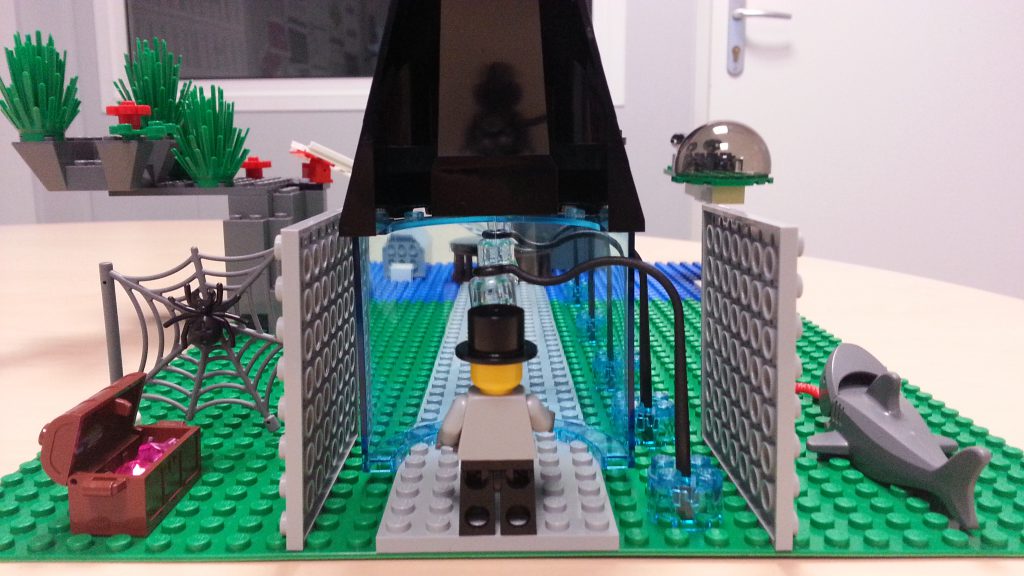
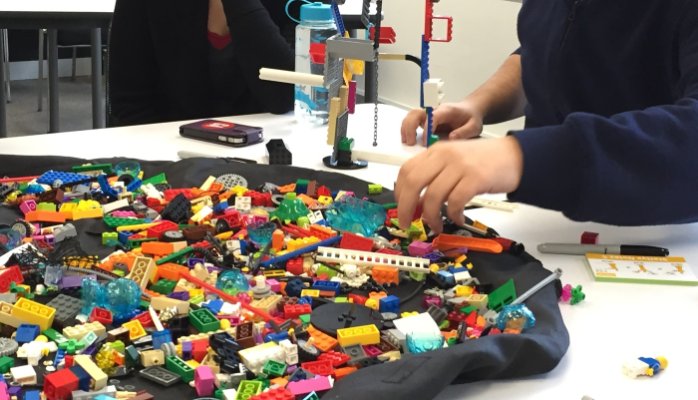

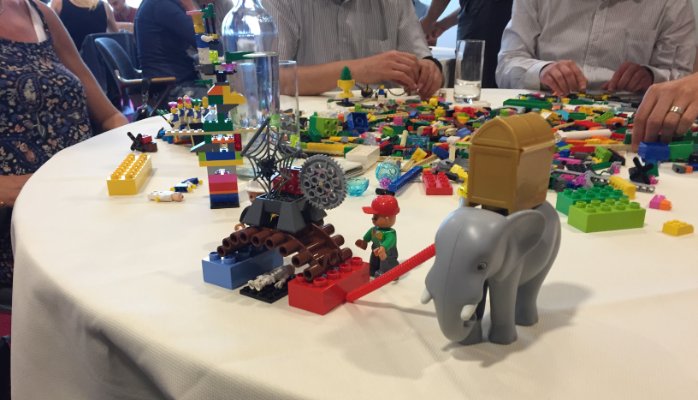
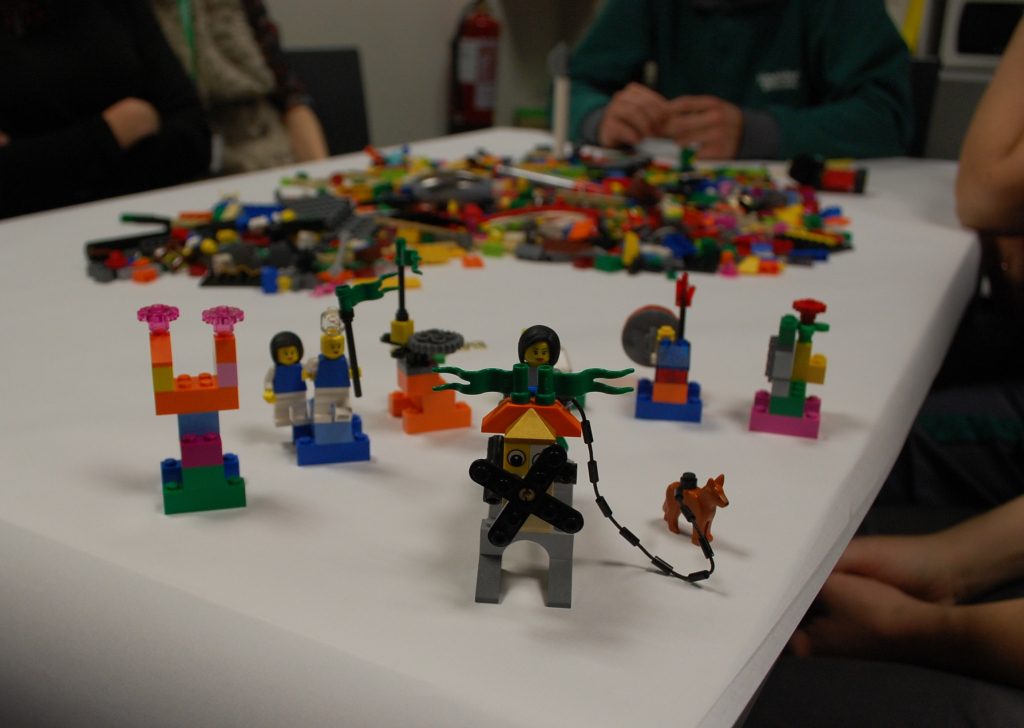

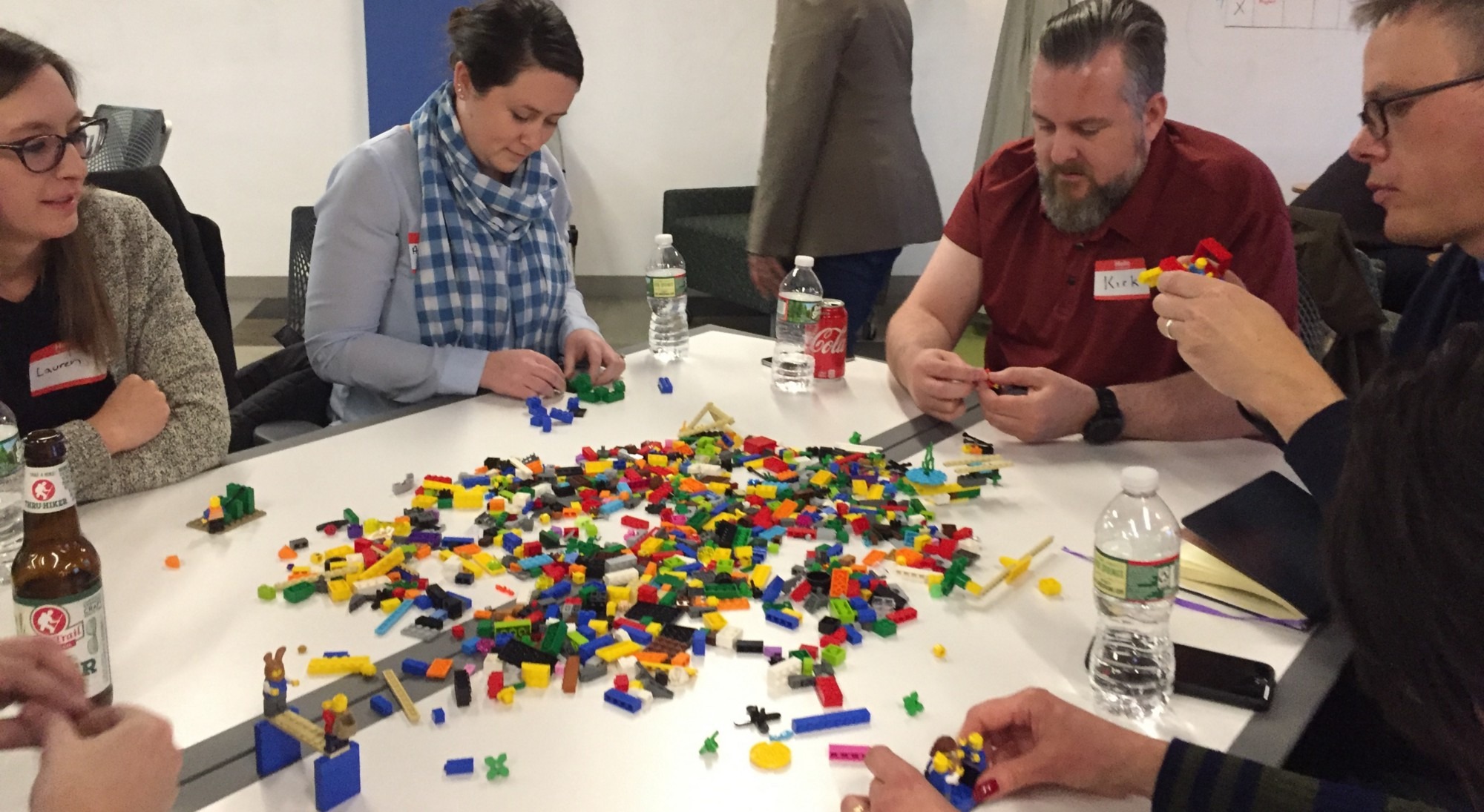
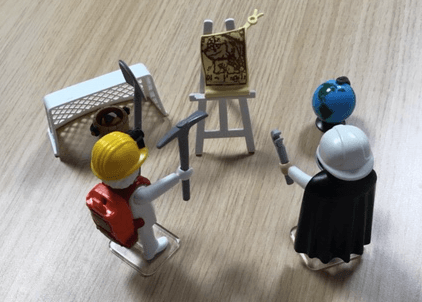

 Become a LEGO Serious Play facilitator - check one of the upcoming training events!
Become a LEGO Serious Play facilitator - check one of the upcoming training events!
Thanks for sharing your story, Mark. I have been facilitating LSP workshops for a couple of months now, and recognise a lot of your insights. I totally agree with you that LSP helps EVERYONE to express themselves AND that people listen to what everyone has to say.
all the best,
Onno
Mark,
Thanks for your generosity in sharing your experiences with LSP. There is a lot I could relate to your story and the fact that many of the challeges are the same even in different countries. I liked you pointed out that in technical environment some participants may find metaphors difficult. As facilitators it’s important we are aware of barriers so we can tailor our workshops to suit the different levels of the participants.
Best Regards and success,
William Freitas
Hi Mark,
I haven’t been on this website much for a while and consequently did not see this post when you published it. I happened to discover it today, when I was just checking that the web site still existed. Anyway, you mention other Airbus/LSP experiences. You may have moved on from your work with Airbus, but it’s always nice to link things together. The politics around the event I mention in this case study were quite sensitive, but I used to love it as an example of the power of the methodology : http://www.caprese.org/EN/experience/Exp_Case_Aerolia_EN.html
Don’t look at the rest of the web site. I haven’t touched it at all since 2017, when we had some major personal upsets and a more demanding schedule.
I see you are now working with Roche – they are very familiar with LSP, as they used it in their corporate leadership programmes organised by IMD in the early 2000s.
Kind regards,
Eli